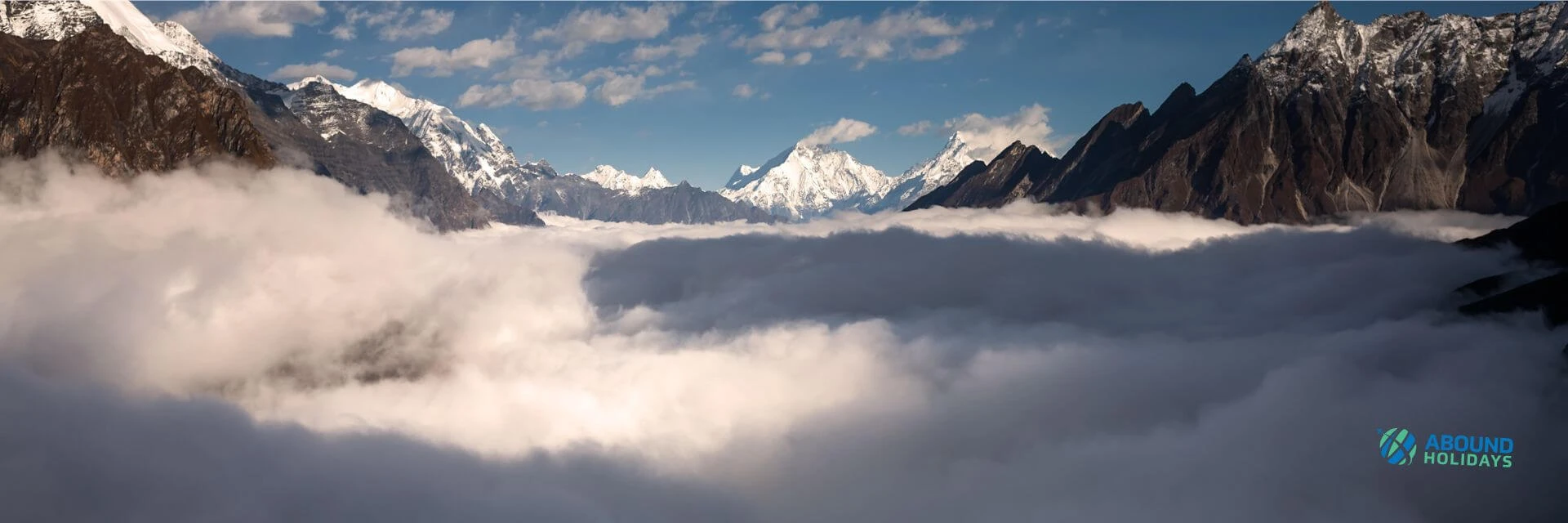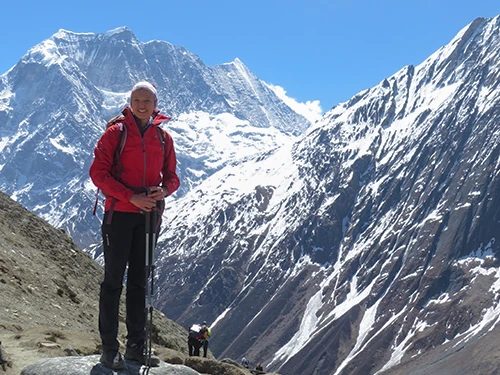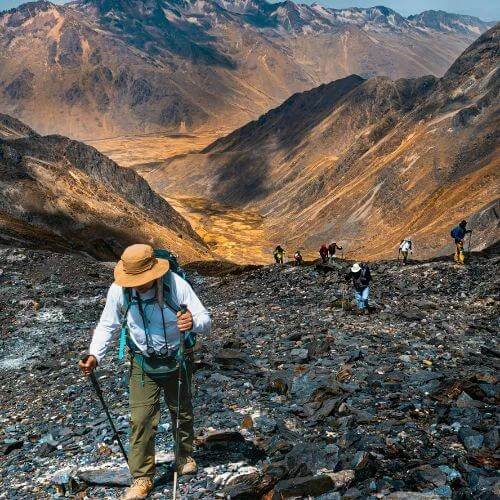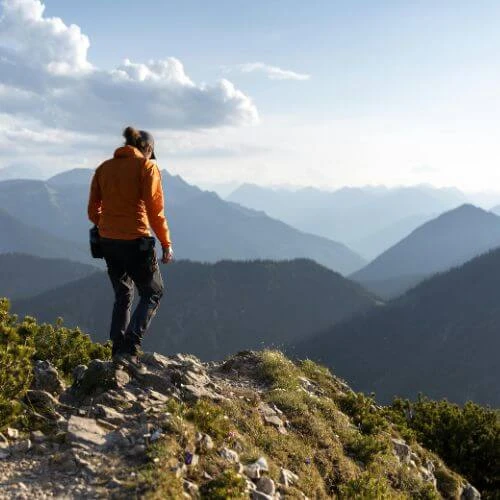Thinking about trekking the Manaslu Circuit? Before you get your gear and start, you need to know about Manaslu Circuit Trek permits. These aren’t just boring papers; they’re your legal pass to safely visit the restricted and protected areas, while also helping take care of nature and support the people who live there.
This guide will cover everything you need to know about getting your permits, the rules, costs, and practical tips to make the process smooth.
Planning the full trek? Check our Manaslu Circuit Trek package for route details, itinerary, and preparation tips.
Why You Need Permits for the Manaslu Circuit Trek
If you’re planning the Manaslu Circuit Trek, permits aren’t optional — they’re required by Nepal’s government. The area around Manaslu is marked as a restricted region, mainly to protect its environment and control visitor flow. So, before you step onto the trail, you’ll need to make sure all your paperwork is in place.
These permits do more than just give you permission to trek. They help authorities keep track of trekkers for safety reasons, which really matters on a remote trail like this. They also make sure the money collected goes toward local communities and conservation work — things like maintaining trails and protecting wildlife.
It’s not just red tape; it’s about trekking responsibly. Without the right permits, you could face fines, get turned back at checkpoints, or even be banned from entering certain areas. So it’s always smarter to sort it out before the hike starts.
Types of Permits Required
The Manaslu Circuit passes through restricted and conservation zones, each requiring different permits. Knowing these helps you plan your budget and avoid confusion before starting your journey.
1. Restricted Area Permit (RAP)
The Restricted Area Permit (RAP) is the main document required for foreign trekkers. It allows entry into the restricted sections of the Manaslu region and is checked at multiple points during the trek.
- Covers the Manaslu region from Jagat to Dharapani
- Issued by the Nepal Tourism Board or local permit offices
- Must be processed through a registered trekking agency
2. Manaslu Conservation Area Permit (MCAP)
The Manaslu Conservation Area Permit, or MCAP, is one of the main documents you’ll need for the trek. It’s different from the restricted area permit because this one focuses on environmental protection. Basically, it’s a small contribution every trekker makes to help preserve the natural and cultural beauty of the Manaslu region.
The MCAP is managed by the National Trust for Nature Conservation (NTNC). It covers the entire conservation zone, including villages like Philim, Lho, and Samagaon. The money collected through this permit goes into projects like maintaining trails, managing waste, and supporting the local communities who live inside the conservation area.
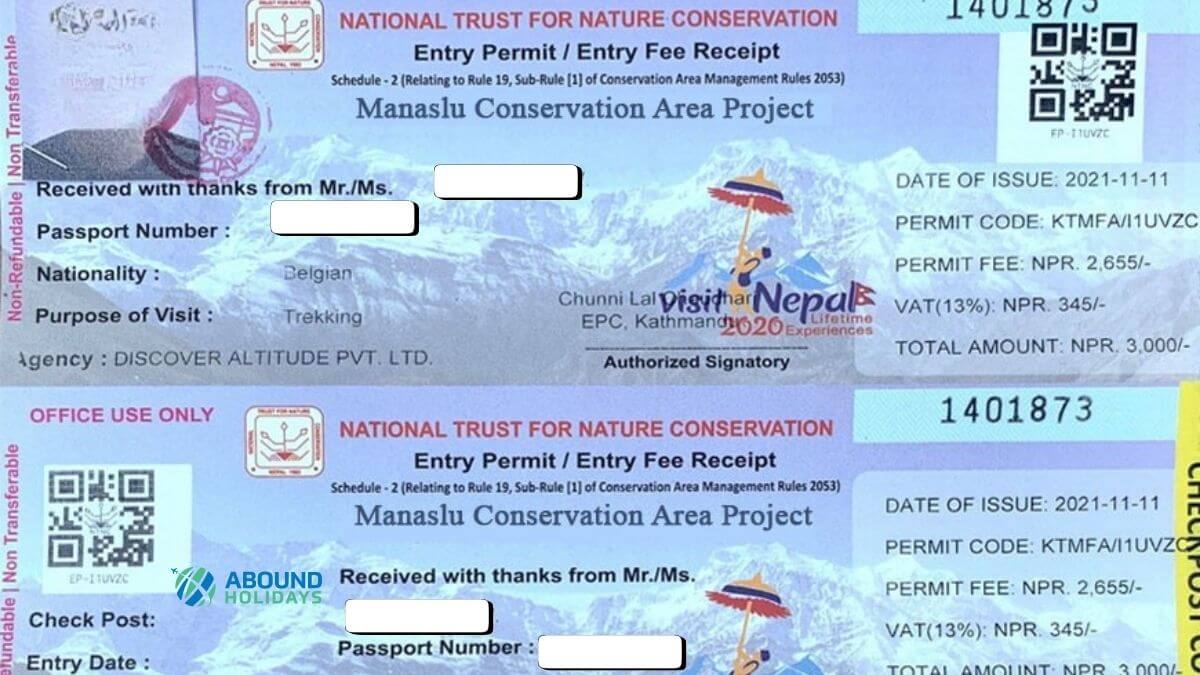
3. TIMS Card (Trekking Information Management System)
The TIMS card is like a digital ID for visitors who go trekking in Nepal. It helps the authorities keep track of trekkers for safety and emergencies. Most trekking areas, including Manaslu, require foreign trekkers to have a valid TIMS card.
- Required for all foreign trekkers
- Issued by the Nepal Tourism Board or authorized trekking agencies
- Keep it with you along with your other permits
4. Annapurna Conservation Area Permit (ACAP)
Some sections of the Manaslu Circuit trek border the Annapurna Conservation Area. Depending on your route, you may also need an ACAP permit in addition to MCAP and RAP. This permit helps conserve the Annapurna region’s environment and support local communities.
- Required only if your trek enters the ACAP zones
- Issued by the Nepal Tourism Board or ACAP offices
- Fees vary for SAARC and non-SAARC nationals
5. Local Checkpoint Fees/Village Entry Fees
Some local villages along the route may collect small entry fees to maintain community infrastructure.
- Usually between NPR 200–500
- Collected at places like Lho, Samagaun, or Namrung
- Always carry some cash for these checkpoints
Documents Needed for Permits
To apply for Manaslu trek permits, you’ll need a few key documents. Preparing these in advance will save you time and prevent delays during the application process.
- Valid passport (at least 6 months left)
- Passport-sized photos (2–4 copies)
- Nepal tourist visa
- Travel insurance covering high-altitude trekking
- Trekking agency authorization (for RAP processing)
Tip: Keep both digital and printed copies. If you’re still organizing your trek, check our Manaslu Circuit Trek Packing List to ensure you have everything ready before applying.
Where and How to Obtain the Permits
Getting the permits is simple if you know where to go. Here’s how to apply, pay, and collect your documents before your trek begins.
You can obtain Manaslu trek permits at:
- Kathmandu: Nepal Tourism Board or authorized agencies
- Local Offices: Besisahar or Soti Khola entry checkpoints (limited processing available)
Permit Process:
- Fill out the application form
- Submit the needed documents and photos
- Pay the fees in cash (NPR is preferred)
- Get your permit or confirmation slip
Many trekkers choose to let their trekking agency handle everything. This saves time, especially in peak seasons when queues can be long.
Don’t want to deal with the permit hassle? We at Abound Holidays include complete permit handling and logistics support in our package pages.
Permit Cost and Validity
Understanding the Manaslu Trek permit cost helps you plan your budget accurately. Costs vary based on nationality and duration, and it’s good to know the breakdown before you go.
- Permits are valid for your entire trek duration (except RAP)
- Prices can increase during peak season (Sept–Nov, Mar–May)
- No refunds are provided once issued
|
Checkpoints & Enforcement Along the Trail
Your permits will be checked at several points during the trek. Understanding where and how this happens ensures a smoother experience and avoids unwanted trouble.
- Main checkpoints: Soti Khola, Jagat, Samagaun, Namrung, Lho
- Always carry the original permit and copies
- Losing or forgetting them can lead to fines or being stopped mid-route
Tip: Store your permits in a waterproof pouch to keep them safe during rain or snow.
Rules & Regulations to Follow
Once you have your Manaslu trek permits, make sure you respect the rules that come with them. For starters, always carry your original permit and a copy of your passport. You’ll be asked to show them at multiple checkpoints along the route.
Another key rule - you must trek with a licensed guide. Solo trekking isn’t allowed in the Manaslu restricted area. This isn’t just for formality; it’s for your safety and the region’s conservation standards. Your guide also helps ensure you stay on approved routes.
- Keep permits and passport copies with you at all times
- Stay on permitted trekking routes
- Avoid littering and use reusable bottles
- Respect local customs, wildlife, and temple sites
- Hire a licensed guide if required
Common Mistakes to Avoid
A few small mistakes can cause unnecessary delays or extra costs. So make sure you are fully prepared for Manaslu Circuit Trek and all the necessary documents are with you before heading to NTB for a permit.
- Incomplete or missing documents
- Waiting to apply at the last minute
- Selecting the wrong fee category (SAARC vs Non-SAARC)
- Forgetting to carry the original permits during the trek
Apply early and double-check everything before leaving Kathmandu to avoid issues later.
Tips for a Smooth Permit Process
Getting your Manaslu trek permits doesn’t have to be stressful. A little planning and awareness go a long way in ensuring the process goes smoothly. These small steps save you time and make your trekking preparation easier.
- Apply a few days before your trek begins
- Use a reliable agency to handle paperwork
- Carry extra passport photos and cash in NPR
- Keep digital backups of all documents
- Confirm which office handles your entry route
Final Thoughts
Getting the right Manaslu Circuit Trek permits might feel like just paperwork, but it actually helps keep the area safe, clean, and open for visitors and trekkers alike. These permits protect both the environment and the local people who depend on trekking for their living.
Before you leave Kathmandu or your starting point in Soti Khola, take a few minutes to double-check all your permits — RAP, MCAP, ACAP, and any local village fees. It saves you from unnecessary trouble on the trail.
Need help getting permits? Contact us, and we’ll handle everything for your Manaslu Circuit Trek so you can focus on the adventure ahead.
FAQs
1. Can foreigners get Manaslu trek permits on the same day?
Yes, foreigners can often get permits the same day in Kathmandu or at the entry points. However, applying 1–2 days early is safer, especially in peak seasons.
2. Are there special permits for SAARC nationals?
Yes, SAARC nationals enjoy discounted rates for RAP and MCAP permits. Always bring your national ID to confirm eligibility.
3. What happens if I lose my Manaslu trek permit during the trek?
Losing your permit can cause delays at checkpoints. Report the loss immediately to the nearest checkpoint or local agency for help.
4. Are permit fees refundable if I cancel my trek?
Permit fees are generally non-refundable. However, some agencies may help you reschedule or adjust if you cancel early.
5. Can children or students get discounted permits?
Children or students can often get lower fees if they show valid ID or student proof. Check at the time of application for exact details.
6. Are there any seasonal restrictions for Manaslu trek permits?
Permits are available year-round, but peak trekking seasons (autumn and spring) have higher traffic. Always check for temporary route updates before starting.
7. Do I need to show my permit at every village checkpoint?
Yes, permits are checked at most major villages. Keep them accessible, as inspectors may ask to see both RAP and MCAP documents.
